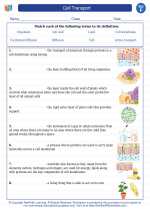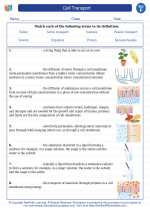Crystalline Structure
Crystalline structure refers to the arrangement of atoms or molecules in a solid material. In a crystalline solid, the atoms are arranged in a regular, repeating pattern that extends in all three spatial dimensions. This regular arrangement gives crystalline materials their unique properties, including distinct geometric shapes and cleavage patterns.
Key Concepts to Understand:
- Lattice Structure: Crystalline materials are made up of a three-dimensional lattice structure, where the atoms or molecules are arranged in a repeating pattern. The lattice structure can be visualized as a series of stacked layers.
- Unit Cell: The smallest repeating unit of a crystalline structure is called the unit cell. It is a three-dimensional geometric shape that, when repeated in all directions, creates the overall crystal lattice.
- Cubic, Tetragonal, Hexagonal, Orthorhombic, Rhombohedral, and Monoclinic Systems: Crystalline structures can be categorized into different systems based on the angles and lengths of the sides of the unit cell. Each system has unique characteristics and properties.
- Crystallography: The scientific study of crystals and their structures is known as crystallography. Crystallographers use techniques such as X-ray diffraction to determine the arrangement of atoms within a crystal.
Study Guide:
To understand crystalline structure, students should focus on the following key points:
- Define crystalline structure and explain how it differs from an amorphous structure.
- Describe the concept of a lattice structure and how it relates to the arrangement of atoms or molecules in a crystal.
- Identify and differentiate between the different types of crystalline systems, including cubic, tetragonal, hexagonal, orthorhombic, rhombohedral, and monoclinic systems.
- Explain the significance of the unit cell in understanding the overall structure of a crystalline material.
- Discuss the applications of crystallography in various scientific fields, such as chemistry, materials science, and geology.
By mastering these concepts, students can gain a thorough understanding of crystalline structure and its importance in the field of science.
.◂Science Worksheets and Study Guides Sixth Grade. Cell Transport
Worksheet/Answer key Cell Transport
Cell Transport  Worksheet/Answer key
Worksheet/Answer key Cell Transport
Cell Transport  Vocabulary/Answer key
Vocabulary/Answer key Cell Transport
Cell Transport  Vocabulary/Answer key
Vocabulary/Answer key Cell Transport
Cell Transport 

 Worksheet/Answer key
Worksheet/Answer key
 Vocabulary/Answer key
Vocabulary/Answer key
 Vocabulary/Answer key
Vocabulary/Answer key

The resources above cover the following skills:
Reading Standards for Literacy in Science and Technical Subjects
Craft and Structure
Determine the meaning of symbols, key terms, and other domain-specific words and phrases as they are used in a specific scientific or technical context relevant to grades 6-8 texts and topics.